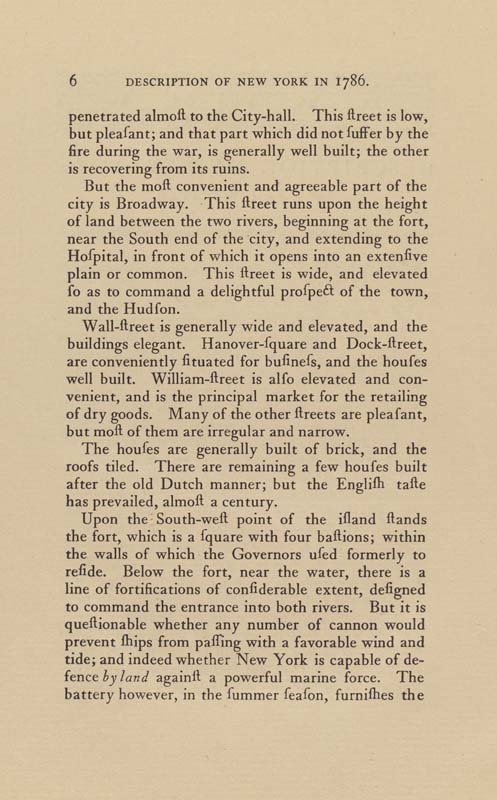6 DESCRIPTION OF NEW YORK IN 1786.
penetrated almoft to the City-hall. This ftreet is low,
but pleafant; and that part which did not fuffer by the
fire during the war, is generally well built; the other
is recovering from its ruins.
But the moft convenient and agreeable part of the
city is Broadway. This ftreet runs upon the height
of land between the two rivers, beginning at the fort,
near the South end of the city, and extending to the
Hofpital, in front of which it opens into an extenfive
plain or common. This ftreet is wide, and elevated
fo as to command a delightful profpeft of the town,
and the Hudfon.
Wall-ftreet is generally wide and elevated, and the
buildings elegant. Hanover-fquare and Dock-ftreet,
are conveniently fituated for bufinefs, and the houfes
well built. William-ftreet is alfo elevated and con¬
venient, and is the principal market for the retailing
of dry goods. Many of the other ftreets are pleafant,
but moft of them are irregular and narrow.
The houfes are generally built of brick, and the
roofs tiled. There are remaining a few houfes built
after the old Dutch manner; but the Englifli tafte
has prevailed, almoft a century.
Upon the South-weft point of the ifland ftands
the fort, which is a fquare with four baftions; within
the walls of which the Governors ufed formerly to
refide. Below the fort, near the water, there is a
line of fortifications of confiderable extent, defigned
to command the entrance into both rivers. But it is
queftionable whether any number of cannon would
prevent fliips from paffing with a favorable wind and
tide; and indeed whether New York is capable of de¬
fence hy land againft a powerful marine force. The
battery however, in the fummer feafon, furniflies the
|








